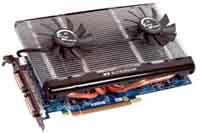
 Rebooted and tried it about three times and still nothing. And as for the 533 front side bus I don't know? I have d/l FS Autostart and am going to install it now
Rebooted and tried it about three times and still nothing. And as for the 533 front side bus I don't know? I have d/l FS Autostart and am going to install it now 

 Rebooted and tried it about three times and still nothing. And as for the 533 front side bus I don't know? I have d/l FS Autostart and am going to install it now
Rebooted and tried it about three times and still nothing. And as for the 533 front side bus I don't know? I have d/l FS Autostart and am going to install it now 




 Mainboard: Asus P5K-Premium, CPU=Intel E6850 @ x8x450fsb 3.6ghz, RAM: 4gb PC8500 Team Dark, Video: NV8800GT, HDD: 2x1Tb Samsung F3 RAID-0 + 1Tb F3, PSU: Antec 550 Basiq, OS: Win7x64, Display: 24&
Mainboard: Asus P5K-Premium, CPU=Intel E6850 @ x8x450fsb 3.6ghz, RAM: 4gb PC8500 Team Dark, Video: NV8800GT, HDD: 2x1Tb Samsung F3 RAID-0 + 1Tb F3, PSU: Antec 550 Basiq, OS: Win7x64, Display: 24&



Thanks everyone for your help
..snip
And i have the latest drivers for this card and motherboard





What about updating your Nvidia drivers? (am I being ignored?)
Thanks for the links to the bench mark aps, etc. ... very interesting stuff. Question, why are you using the 3D Mark 03 instead of the 3D Mark 05?




What about updating your Nvidia drivers? (am I being ignored?)
 I really did update my drivers as well, i just forgot to put that in.
I really did update my drivers as well, i just forgot to put that in.








 Mainboard: Asus P5K-Premium, CPU=Intel E6850 @ x8x450fsb 3.6ghz, RAM: 4gb PC8500 Team Dark, Video: NV8800GT, HDD: 2x1Tb Samsung F3 RAID-0 + 1Tb F3, PSU: Antec 550 Basiq, OS: Win7x64, Display: 24&
Mainboard: Asus P5K-Premium, CPU=Intel E6850 @ x8x450fsb 3.6ghz, RAM: 4gb PC8500 Team Dark, Video: NV8800GT, HDD: 2x1Tb Samsung F3 RAID-0 + 1Tb F3, PSU: Antec 550 Basiq, OS: Win7x64, Display: 24&

Some are beta, some are approved, just sus out the details, sometimes you need to read the readmes or follow up the threads link about them to get more details.

Thanks, I did find the notes about the newer one being used by one of the games that just came out, etc. Guess I'll go ahead and upgrade.
 Mainboard: Asus P5K-Premium, CPU=Intel E6850 @ x8x450fsb 3.6ghz, RAM: 4gb PC8500 Team Dark, Video: NV8800GT, HDD: 2x1Tb Samsung F3 RAID-0 + 1Tb F3, PSU: Antec 550 Basiq, OS: Win7x64, Display: 24&
Mainboard: Asus P5K-Premium, CPU=Intel E6850 @ x8x450fsb 3.6ghz, RAM: 4gb PC8500 Team Dark, Video: NV8800GT, HDD: 2x1Tb Samsung F3 RAID-0 + 1Tb F3, PSU: Antec 550 Basiq, OS: Win7x64, Display: 24&

Users browsing this forum: No registered users and 302 guests